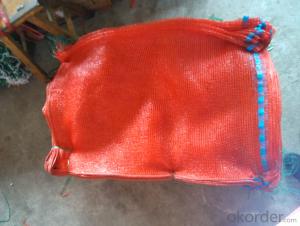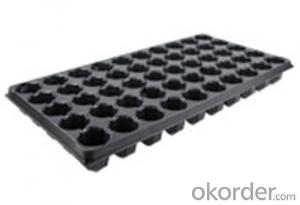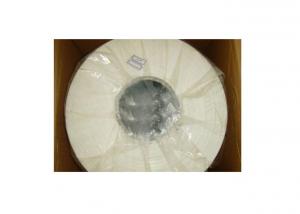Hydroponic Seedling Planting Plastic Seeding Tray for Green House
- Loading Port:
- China main port
- Payment Terms:
- TT OR LC
- Min Order Qty:
- 1000 pc
- Supply Capability:
- 10000000 pc/month
OKorder Service Pledge
OKorder Financial Service
You Might Also Like
Structure of the seed tray: · Top quality and competitive price. · Variety design and good appearance. · Easy to use, and remove. · Durable and reusable. · Eco-Friendly.
Advantages: · Top quality and competitive price. · Variety design and good appearance. · Easy to use, and remove. · Durable and reusable. · Eco-Friendly.
Application: · Ideal for Starting seeds and Transplanting Seedling. · Suitable for both manual and automatic planting. · Suitable for Propagating Vegetables, Flowers and other plant from seed · in green-house or indoors.
Description Main Features of the seed tray: · Ideal for Starting seeds and Transplanting Seedling. · Suitable for both manual and automatic planting. · Suitable for Propagating Vegetables, Flowers and other plant from seed in green-house or indoors. Using time: · thickness of 0.5mm can be used 1 to 2 times. · thickness of 0.6mm can be used 3 to 4 times. · thickness of 0.7mm can be used 5 to 6 times. · thickness of 0.8mm can be used 7 to 8 times. · thickness of 0.9mm can be used 8 to 9 times. · thickness of 1.0mm can be used 8 to 10 times. Thickness vs. Weight: · Thickness of trays are from 0.5mm to 1.0mm. · 1.0mm: 155g±5g; 100pcs/ctn. · 0.9mm: 140g±5g; 120pcs/ctn. · 0.7mm: 110g±5g; 150pcs/ctn. · 0.6mm: 95g±5g; 180pcs/ctn. · 0.5mm: 80g±5g; 200pcs/ctn.
Seed Tray Specification: Materialps/pvcThickness0.5mm-1.5mm, standard:1mmWeight80g(±5)g-230g(±5)g, Standard weight:155g(±5)gSizelength:490mm-540mm, width:190mm-345mm,depth:25mm-150mm Standard:54mmX28mmCell count18-512Packagein cartonUsing time8-10 times
FAQ: Q:How Can I Get A Sample? A:You can get samples by communicate with our export sales. Q:How Long Is Delivery? A:Delivery time will be 7-25 days according to order quantity. Q:What Is The MOQ? A:Our MOQ is 1*20FT container quantity, allow to mix several items. Q:What Is Our Normal Payments Terms? A:Our normal payment terms now is T/T, L/C or Western Union,Papal. Q:How Do I Order Your Products? A:You can check our website for any items you interest and you can also get communication with our export sales and order for it accordingly. Q:What Kinds Of Material We Use In Our Product? A:Our plastic flower pots use material such as PP polymer or PE polymer.
|
- Q: What are the advantages of using plastic feed troughs for livestock?
- There are several advantages of using plastic feed troughs for livestock. Firstly, plastic troughs are lightweight and easy to handle, making them convenient for farmers to move and clean. Secondly, plastic is a durable material that is resistant to rust, corrosion, and rot, ensuring the longevity of the feed troughs. Additionally, plastic troughs are non-porous, making them hygienic and easy to sanitize, reducing the risk of bacterial contamination. Lastly, plastic troughs are often designed with features such as adjustable height or built-in drainage, allowing for better control over feed intake and minimizing waste.
- Q: What types of plastic pipes are used for irrigation systems?
- Some common types of plastic pipes used for irrigation systems include polyvinyl chloride (PVC) pipes, polyethylene (PE) pipes, and high-density polyethylene (HDPE) pipes.
- Q: I always chew on plastic! Is that bad for my teeth? What if I accidentally swallow a piece? Would that be bad?
- Plastic is not good for you. So long the plastic you chew or swallow is non-toxic, you will live... although you may get a stomach ache. Plastic is generally made in factories that are not food-grade clean - unless they were made from food, so they may have germs, dirt, bugs, etc in it that you are unable to see and could make you sick. Always chewing on plastic is bad for your teeth and can wear them down, such that you may need to get dentures sooner rather than later in life. But it's not so bad as chewing ice, I suppose. Ice would wear your teeth out faster. Chewing plastic does not look good to other people who see you do it either... kind of reminiscent of chewing someone else's old gum. Yucky.
- Q: I know how hard it is to recycle plastics, like bags and bottles and such. DO you think there is an efficent and economical way to partially melt or adhere plastics together to make like commerical fenceposts, bricks, or wall materials with out harmful side effects, leeching, high energy output to make them? If we were to just walk around gathering plastic bags, bottles and other stuff that clogg landfills and take hundreds of years to decay is this s resource we could scientifically use for building material?
- This okorder
- Q: I've heard that having beverages in plastic bottles in the heat, say in your car and over the next couple of days if it gets hot in your car, the plastic contaminates your water. is it safer to have like a glass bottle of soda in your car instead of a plastic bottle of a beverage? thanks.
- im gonna be honest i didnt even read your question i just need points
- Q: What are the different types of agricultural plastic nets?
- There are various types of agricultural plastic nets, including shade nets, insect nets, bird nets, windbreak nets, frost protection nets, and ground cover nets.
- Q: I know most of you will straight away think, quot;plastic bags! of course, duh!quot; well, yes, more of them are used than plastic bottles. but at least with plastic bags, you get a choice whether you want a plastic bag, a paper bag, a cloth bag or no bags at all right? but with plastic bottles, you only get the choice of plastic bottles. Lots of countries and cities have already banned plastic bags, but I don't see any headlines on the news about places like china banning plastic bottles, and China is basically the biggest place where plastic bottles are used!! so my arguement is, why aren't people banning plastic bottles too? what fills the landfill more and why don't we have a choice between plastic bottles?
- It is popular - and easy - to demonize plastic bags. But plastic bags actually have a smaller carbon footprint than paper bags. They take less resources and create less wasteful byproducts to manufacture, and they take up less room in a landfill. And far less than a cloth bag. You have to use a cloth bag over a dozen times to even out its carbon footprint, and that does not include washing the reusable bag, which of course, is necessary to be sanitary. Plastic water bottles - well, you have to use a stainless steel refillable water bottle 500 times to even out its carbon footprint to plastic bottles. I don t know about you, but my stainless steel water bottles don t last that long. We too often jump on the bandwagon without getting all the facts.
- Q: What kind of plastic surgery did you have and are you happy with the results?
- No, but I really want some! I want to get rhinoplasty (nose-job), blepharoplasty (eyelid surgery), and breast implants. :]
- Q: I want to stencil on light switch plates that're dry plastic.is it possible?what kind of paint do I need?thanks.
- dont use acryllic it will just peel right off. spray it with hairspray first and then stencill your design that should help the acrylic stick when your done one more coat of hairspray should make it stay
- Q: What are the regulations concerning the use of hazardous substances in agricultural plastic products?
- <p>Yes, there are regulations that govern the use of hazardous substances in agricultural plastic products. These regulations vary by country and region but generally aim to protect the environment and human health. For instance, the European Union has the RoHS (Restriction of Hazardous Substances) directive, which restricts the use of certain hazardous substances in electrical and electronic equipment, including those used in agriculture. Similarly, China has its own set of regulations under the Management Methods for the Control of Pollution Caused by Electronic Information Products. Compliance with these regulations is crucial to ensure the safety and sustainability of agricultural practices.</p>
Send your message to us
Hydroponic Seedling Planting Plastic Seeding Tray for Green House
- Loading Port:
- China main port
- Payment Terms:
- TT OR LC
- Min Order Qty:
- 1000 pc
- Supply Capability:
- 10000000 pc/month
OKorder Service Pledge
OKorder Financial Service
Similar products
Hot products
Hot Searches
Related keywords
































